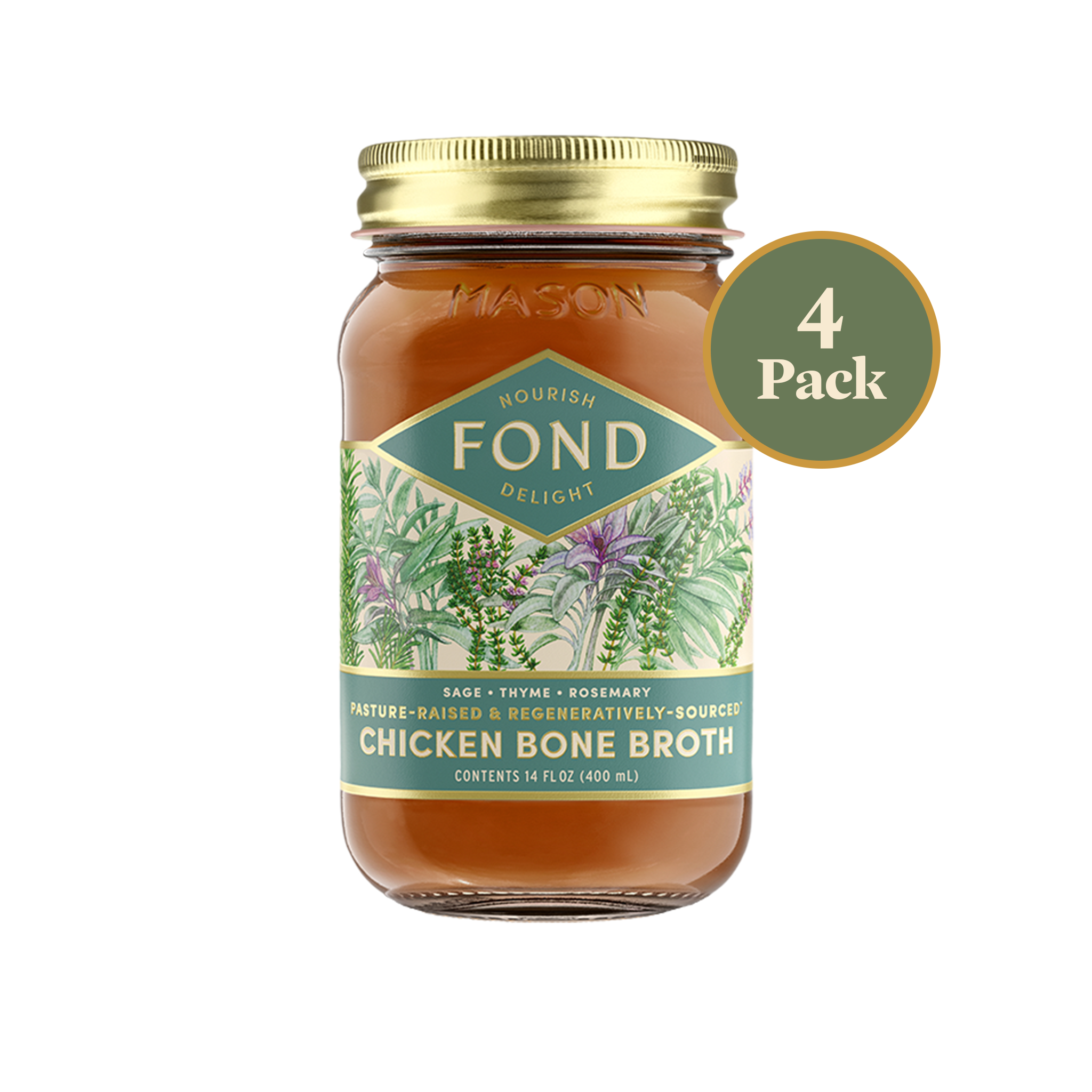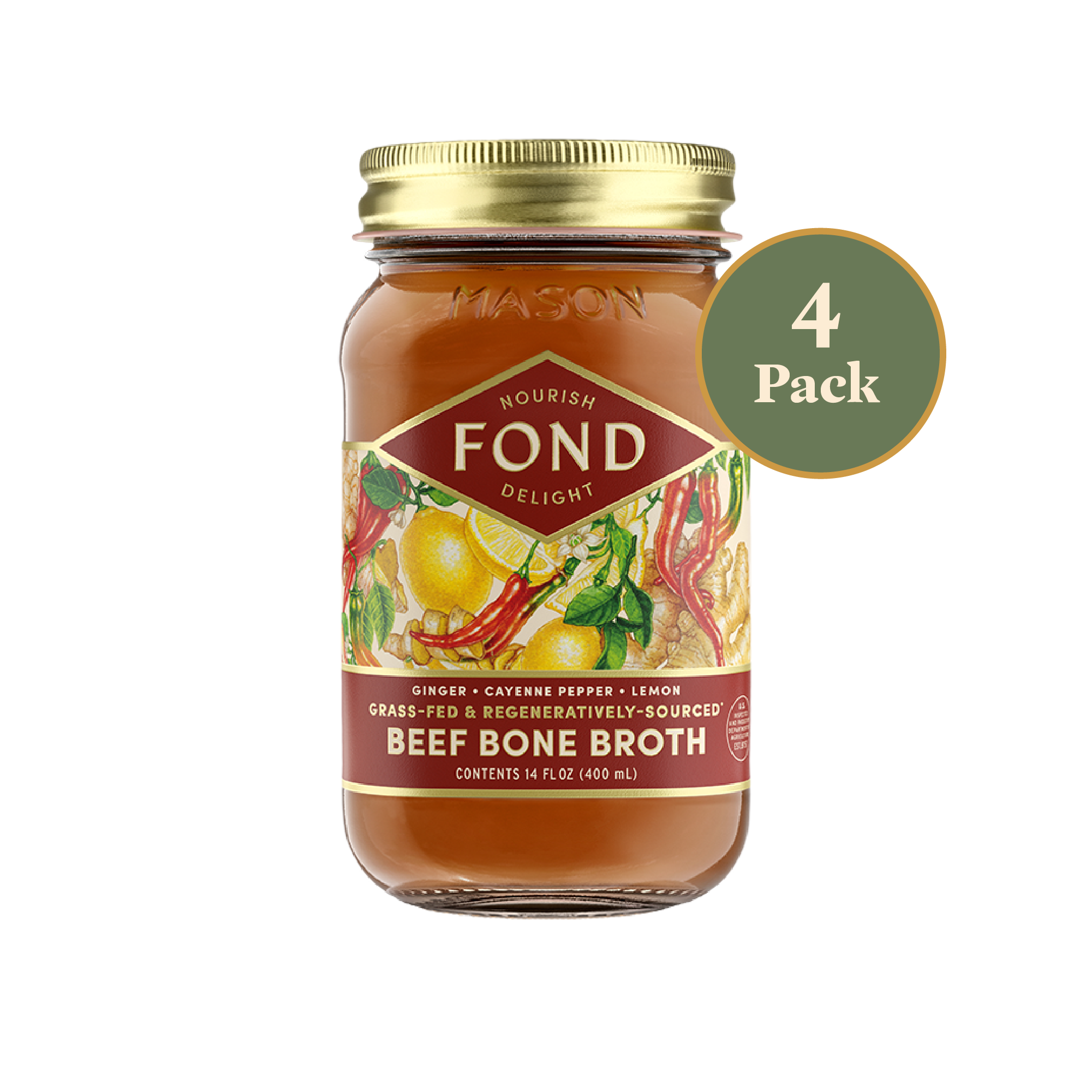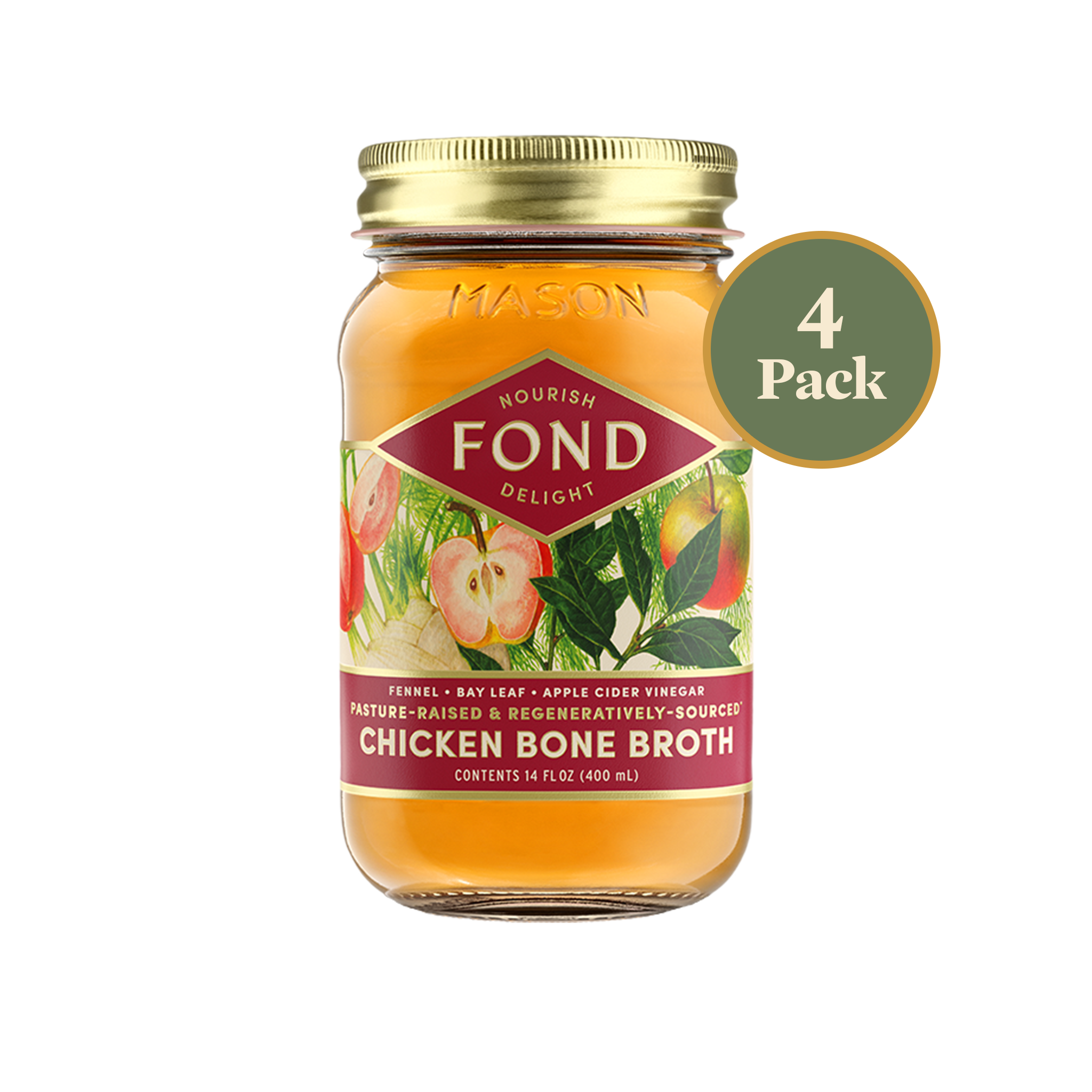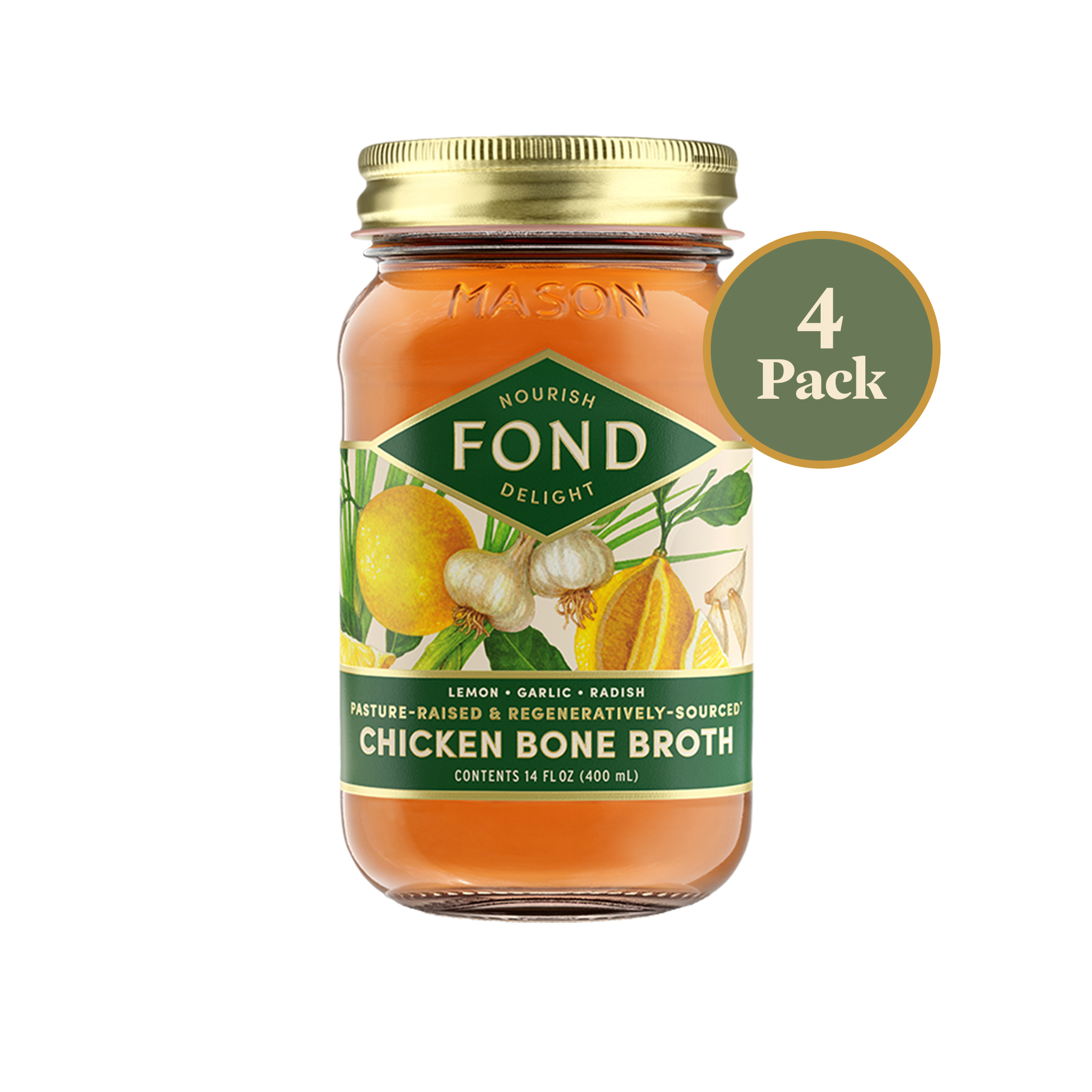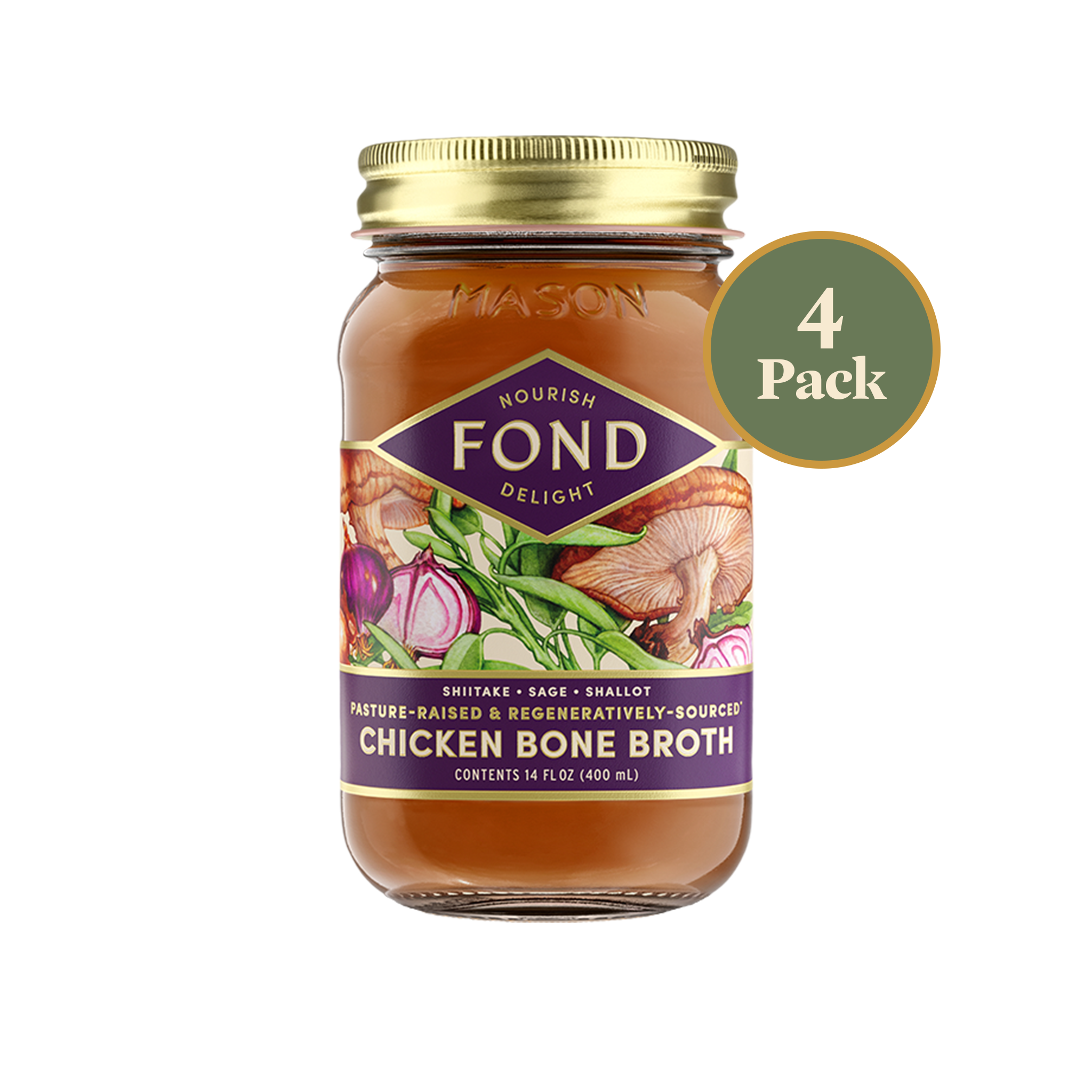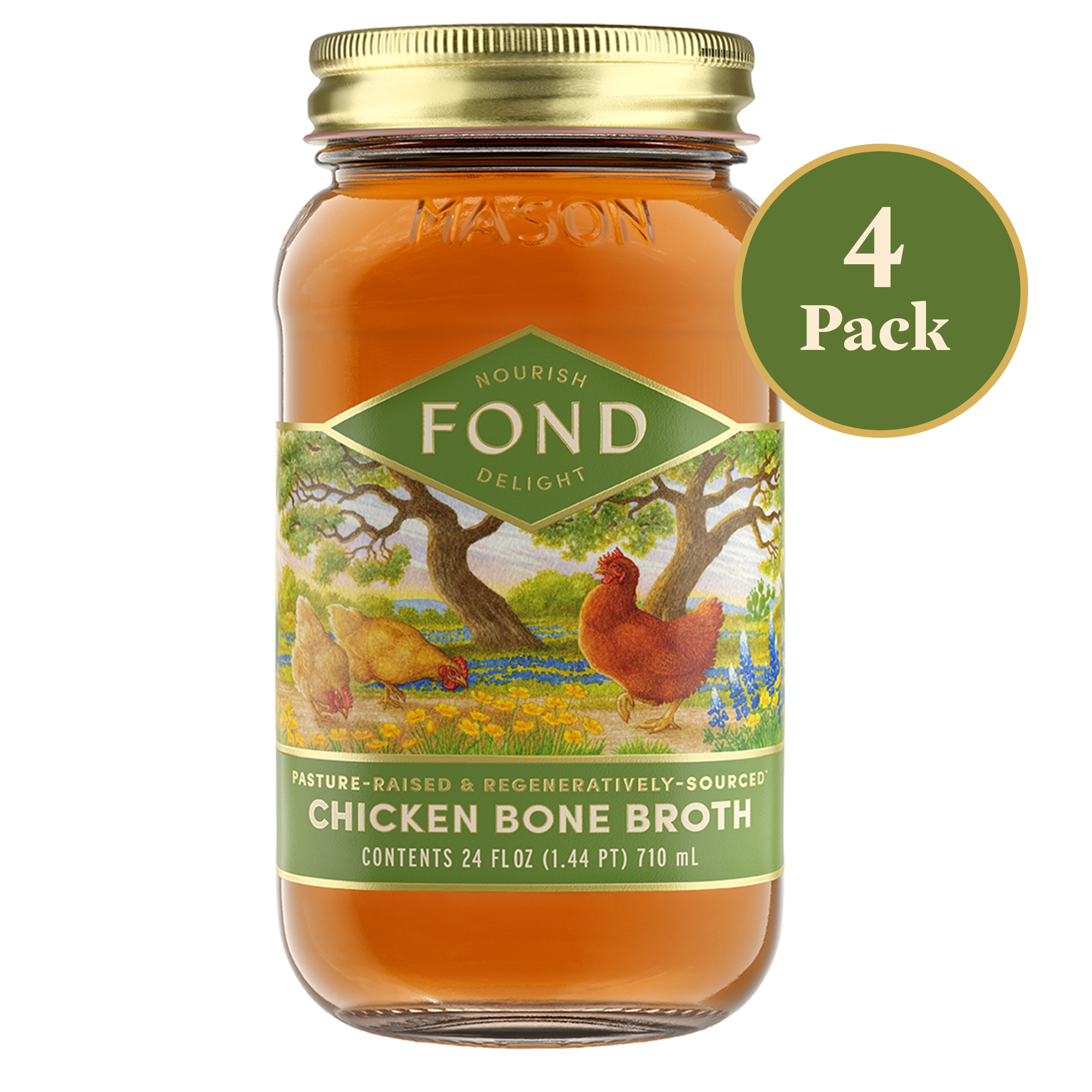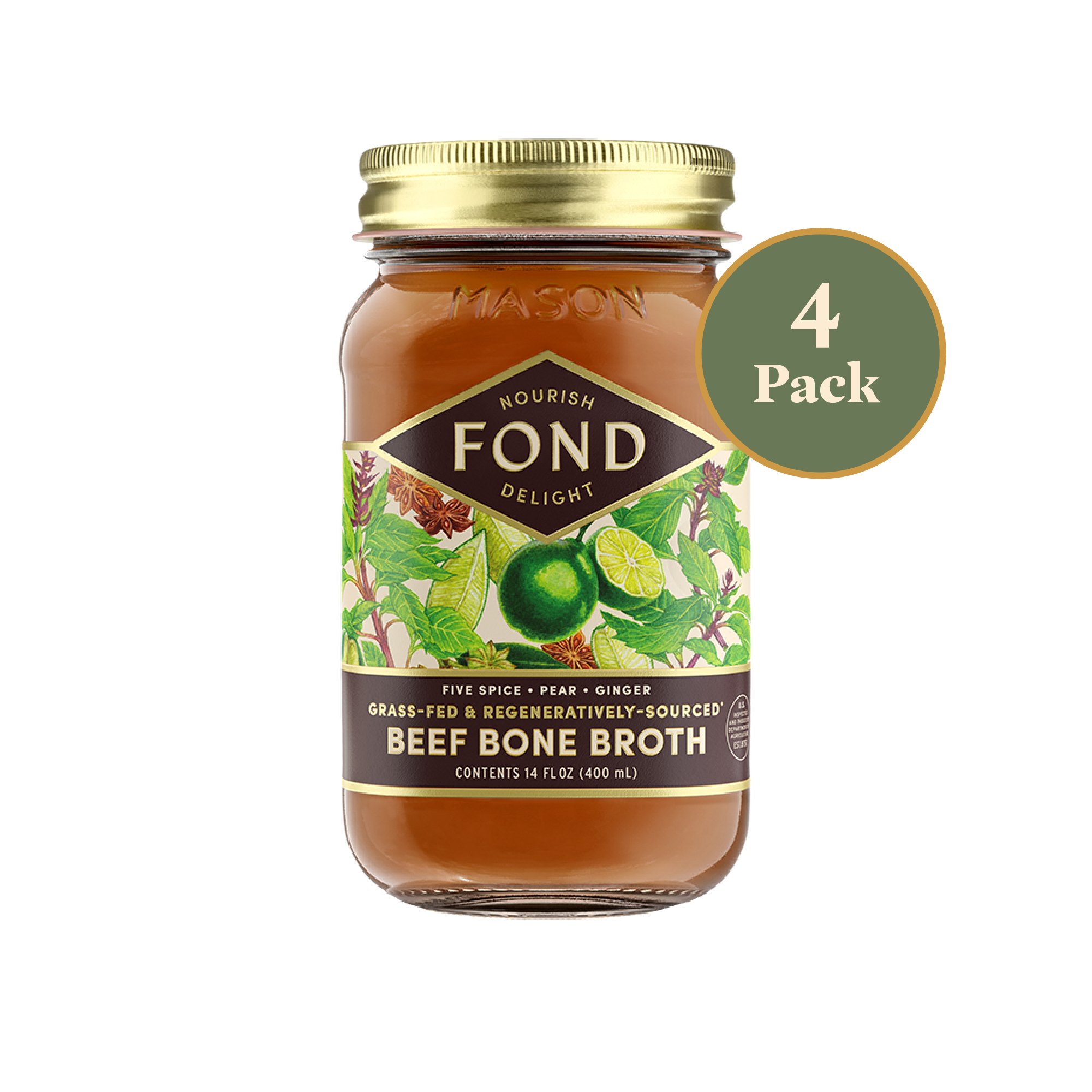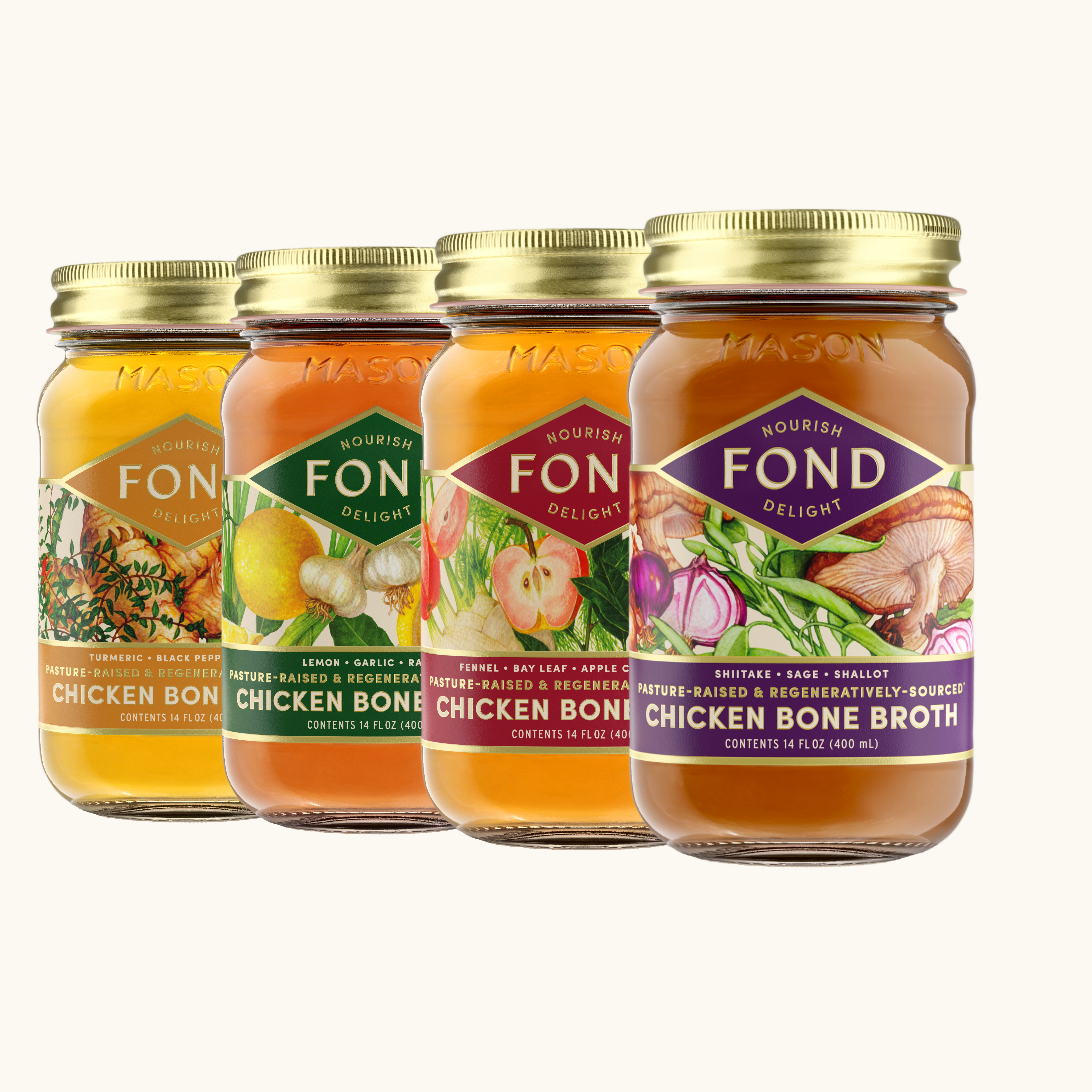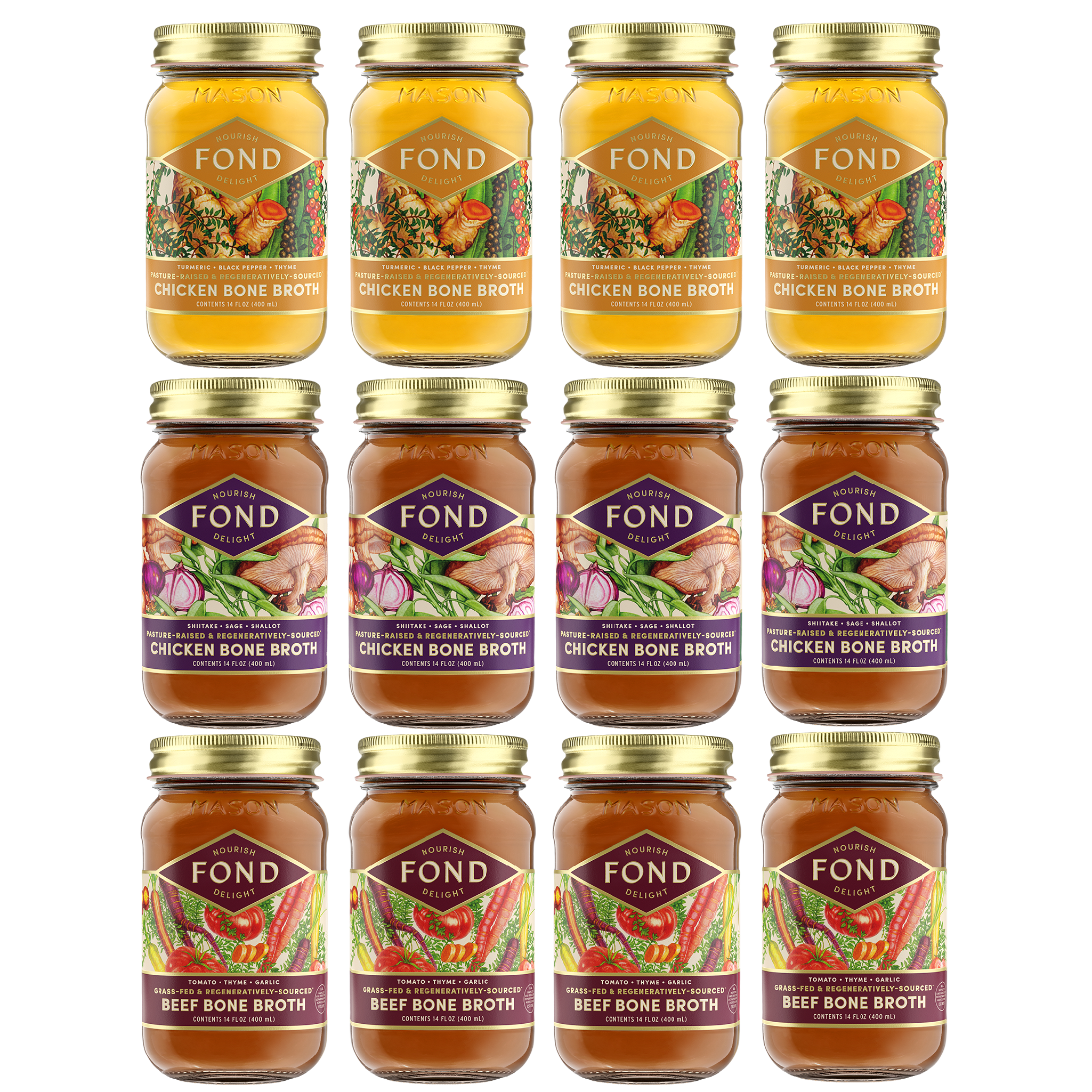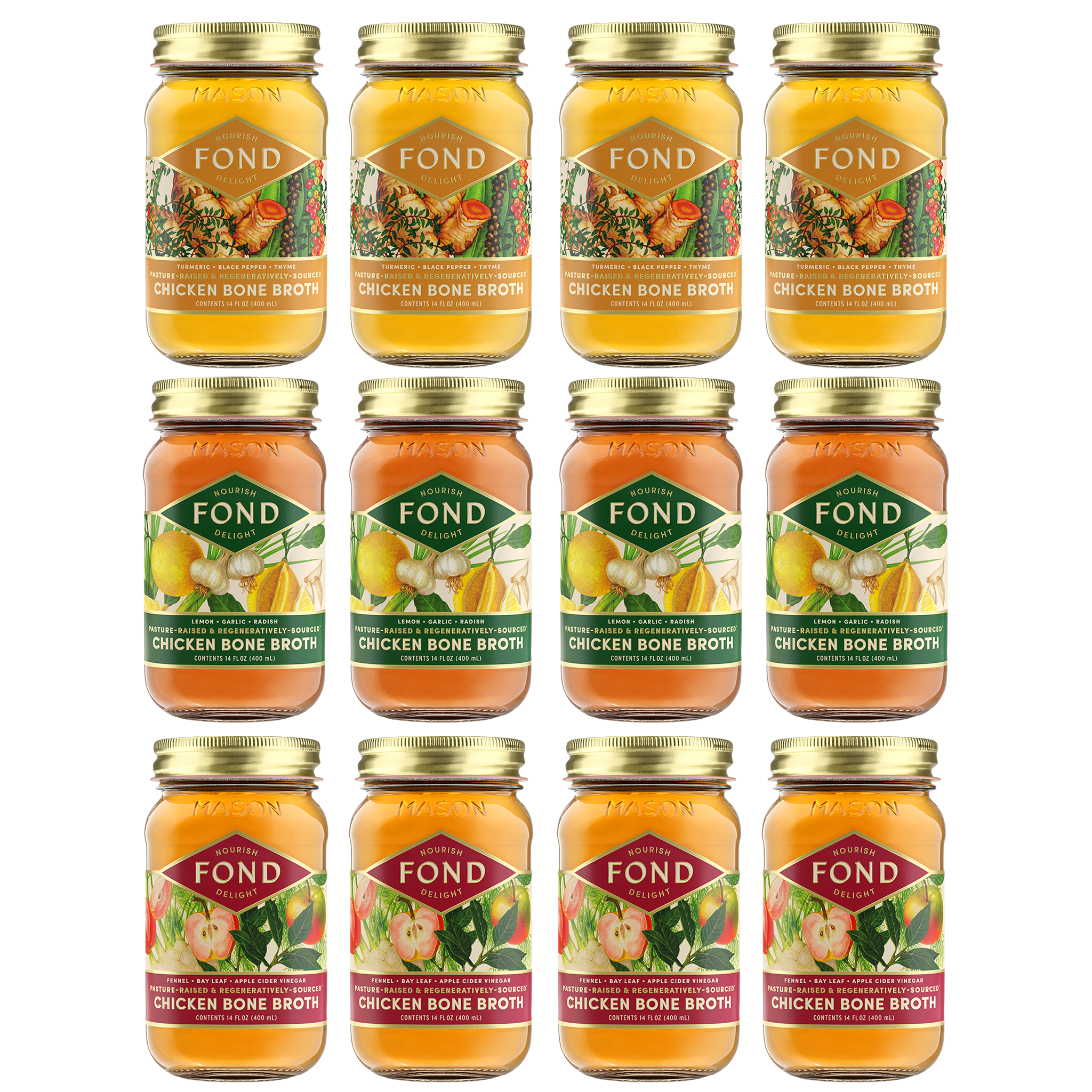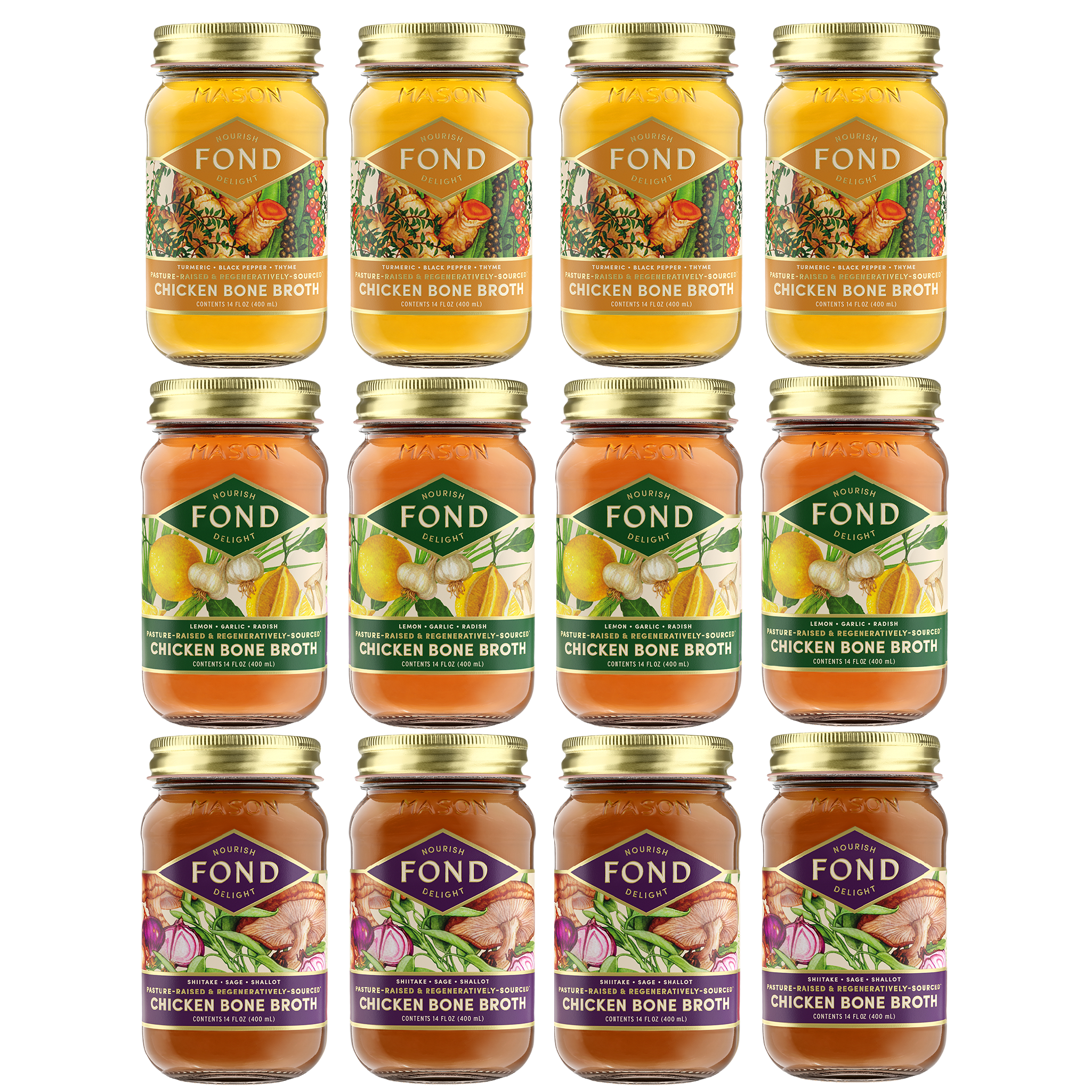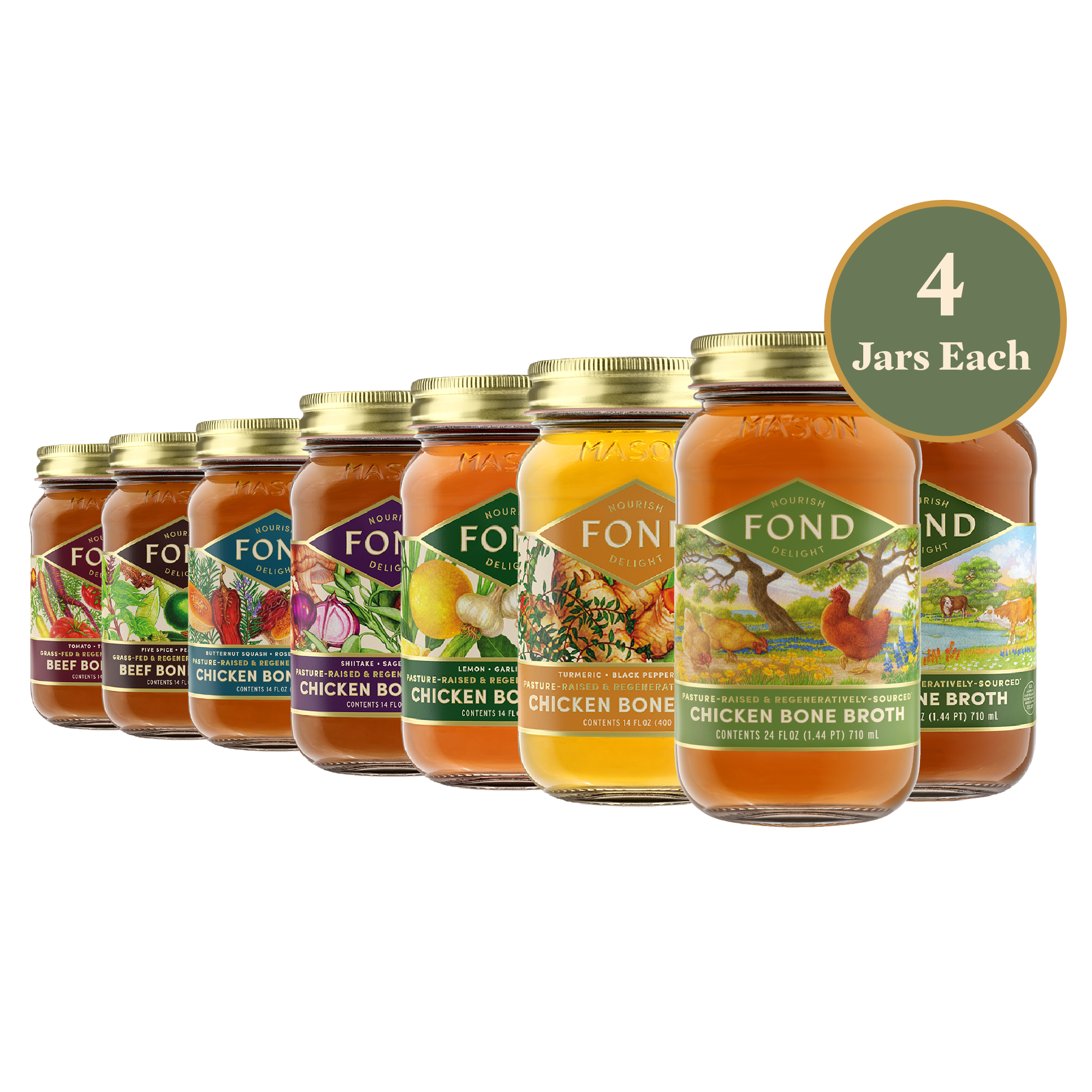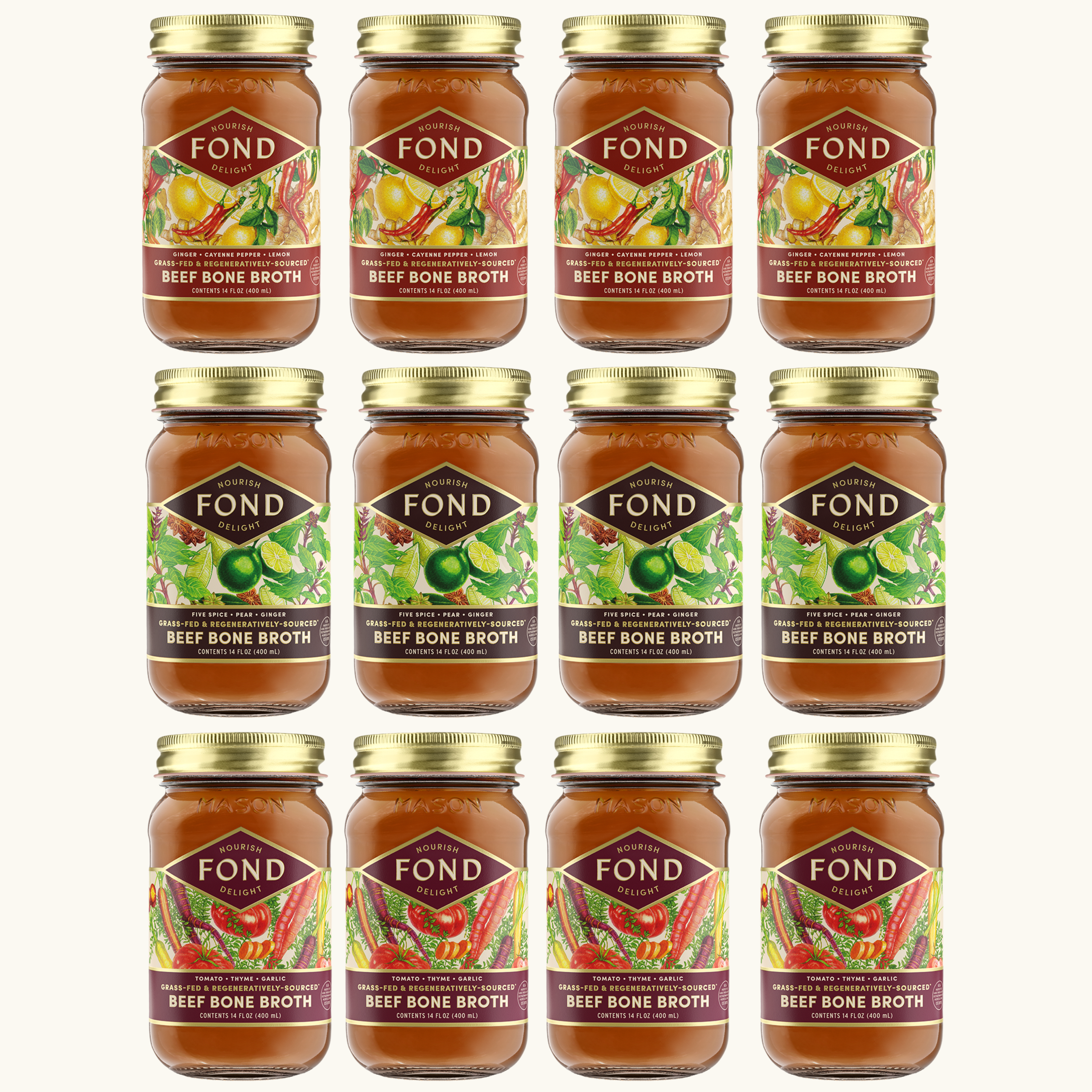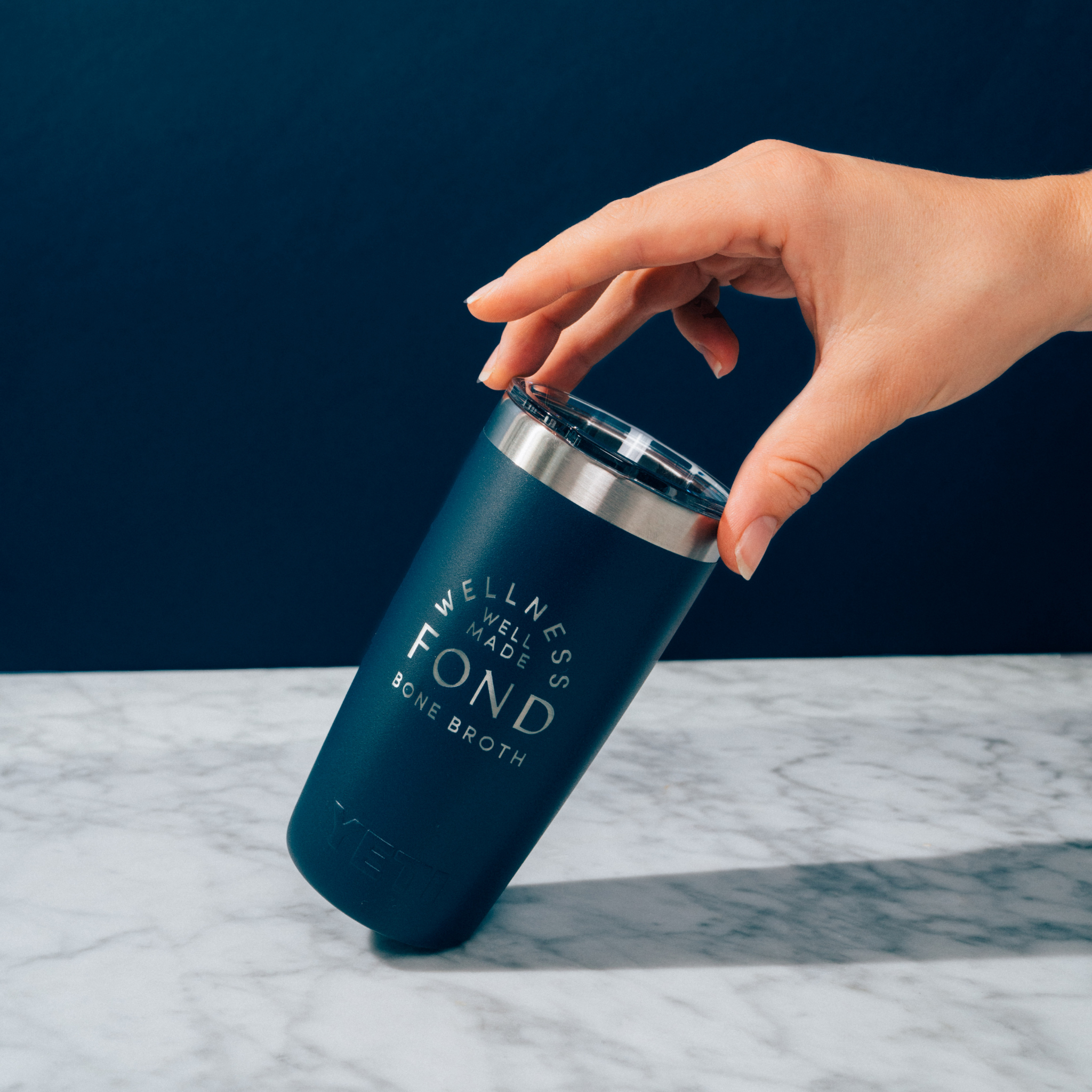Here at FOND, we LOVE all things Whole30, from the program, to their HQ team, and the fantastic community they’ve built. Our Director of Brand Strategy & Partnerships is even a Whole30 Certified Coach! And we’re a Whole30 Approved partner, meaning that all of our bone broths and their ingredients get the Whole30 seal of approval. Our bone broth tonics are the perfect supplement to all of the delicious food you’ll be eating on your Whole30!
But if you’re new to the Whole30 program, you might be wondering what it is, or why you’d want to do it. Today, we’re breaking down everything you need to know about the Whole30, whether or not it’s right for you, and what you can expect from this 30-day dietary reset.
What is Whole30?
Whole30 is a 30-day program designed to change your health, your habits, and your relationship with food. Think of it as a jumpstart to healthier habits. For 30 days, you remove commonly inflammatory foods to see how you feel without them. From there, you slowly reintroduce each food, one by one, to see how they impact you both mentally and physically.
For 30 days, you’ll avoid:
- Gluten
- Grains
- Dairy
- Soy
- Beans/legumes
- Added sugar
- Alcohol
- Carrageenan, MSG, or sulfites
- Baked goods, junk food, or treats made with technically compatible ingredients
- Stepping on the scale or taking body measurements
There are other foods that aren’t necessarily off-limits, but that are best limited on your Whole30, including vegetable oils (like canola or sunflower oil), smoothies, and juices.
Think of all of these foods as simply unknowns, rather than “bad” foods that are best to avoid forever. The Whole30 is truly the ultimate self experiment to help you figure out what works best for you.
What do I eat on my Whole30?
Given the above list, you might be wondering what you’re supposed to eat. Don’t worry - there’s plenty!
Your plate will mostly consist of lots of vegetables (both starchy and non-starchy), some fruit, high-quality protein, and healthy fats (like avocado, coconut, nuts and seeds, olives, extra virgin olive oil, and grass-fed ghee). There are tons of Whole30-focused bloggers out there who exclusively create Whole30 recipes (@whole30recipes on Instagram is a great place to start!) and we also have an array of Whole30 recipes on our website. Just choose ‘Whole30’ from the dietary interests dropdown.
Just know that there are plenty of recipes out there, and you can always keep it simple too! As long as you’re eating compatible food that works within the program rules, you’re doing great. Thankfully, there are also lots of Whole30 Approved companies out there these days (like FOND!) making Whole30 easier with nourishing pre-made options.
Who is the Whole30 for?
Simply put, the Whole30 is for almost everyone! Whether you’re eating a Standard American Diet or you have a health condition like Diabetes, an autoimmune disease, high blood pressure, or IBS, the Whole30 can be truly transformative. If you do have a diagnosed health condition, it’s best to check with your doctor to see if it’s a good option for your specific medical history.
The non-scale victories associated with successfully completing a Whole30 include:
- Decreased joint pain
- Improved digestion and gut health
- Clearer skin
- Decreased anxiety and depression
- Better blood sugar control
- Improved mood
- Increased energy
- Improved biometrics (decreased blood pressure, decreased LDL, increased HDL, etc)
- And so much more!
It’s important to note that some people with chronic health conditions or autoimmune conditions may need longer than 30 days to see the results they’re looking for. And Whole30 isn’t the answer for everything - sometimes people have more severe digestive issues or other problems that require a different elimination diet or another approach altogether.
Having said all of that, if you’re someone who has a history of eating disorders or disordered eating, the Whole30 likely isn’t for you. Approach the decision of whether or not to do a Whole30 carefully with your therapist, doctor, or other practitioner giving feedback.
What happens after Whole30?
The Whole30 isn’t designed to be something you do forever, though you could continue eating this way long-term without any issues. Instead, after 30 days, there is a reintroduction phase where you add each food back in one-by-one to see how they impact you.
Though there are two different ways to reintroduce foods, the most common is the ‘fast track’ reintroduction. It is a ~10 day process that involves adding foods back in from least likely to be problematic to most likely to be problematic. Here’s what it looks like:
- Day 31 - reintroduce legumes
- Days 32 & 33 - back to Whole30 to monitor for any reactions
- Day 34 - reintroduce gluten-free grains
- Days 35 & 36 - back to Whole30 to monitor for any reactions
- Day 37 - reintroduce dairy
- Days 38 & 39 - back to Whole30 to monitor for any reactions
- Day 40 - reintroduce gluten
When you’re monitoring for reactions, keep in mind that a response can go far beyond stomach upset. You might notice joint pain coming back, acne popping up that wasn’t there before, a decline in sleep quality, or even an increase in anxiety. Food truly does impact our mind and body!
Once you know how these different foods impact you, you can then decide which foods work for you and which are best to limit. Essentially, you’re able to create the diet that works best for you and helps you feel your best - one that gives you the widest variety possible while also minimizing any side effects.
We will do another post on reintroduction in the future but, in the meantime, the Whole30 website has lots of amazing resources on the topic.
How can bone broth support your Whole30?
We might be biased, but we think that bone broth is the perfect complement to your Whole30, whether you use it for sipping or to easily level-up the flavor of your recipes. Here are a few times that bone broth can come in handy during your Whole30:
- It’s 3pm and an afternoon craving hits! You’re tempted to reach for fruit or worse, a non-compatible option like candy. Bone broth is the perfect bridge here - rich in protein, collagen, and trace minerals to help you feel satisfied and focused until dinner.
- You want to add flavor to a recipe without a lot of extra steps or ingredients.
- You want a sub for your sugary morning coffee. You can even add in extra collagen and grass-fed ghee for a bone broth latte.
- You are used to having a treat every evening after dinner - let bone broth become your new soothing ritual!
- You want to make sure you’re getting in enough protein and calories during your Whole30.
Are there other times that FOND has come through for you during your Whole30? Let us know in the comments!






